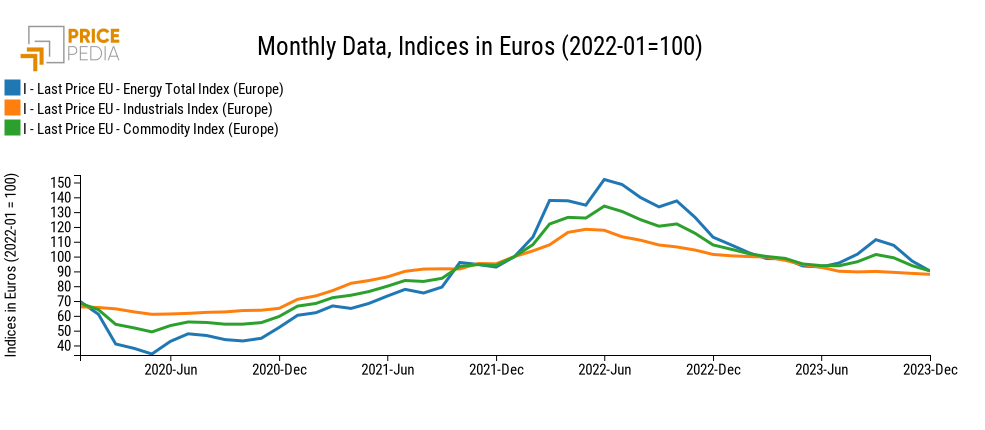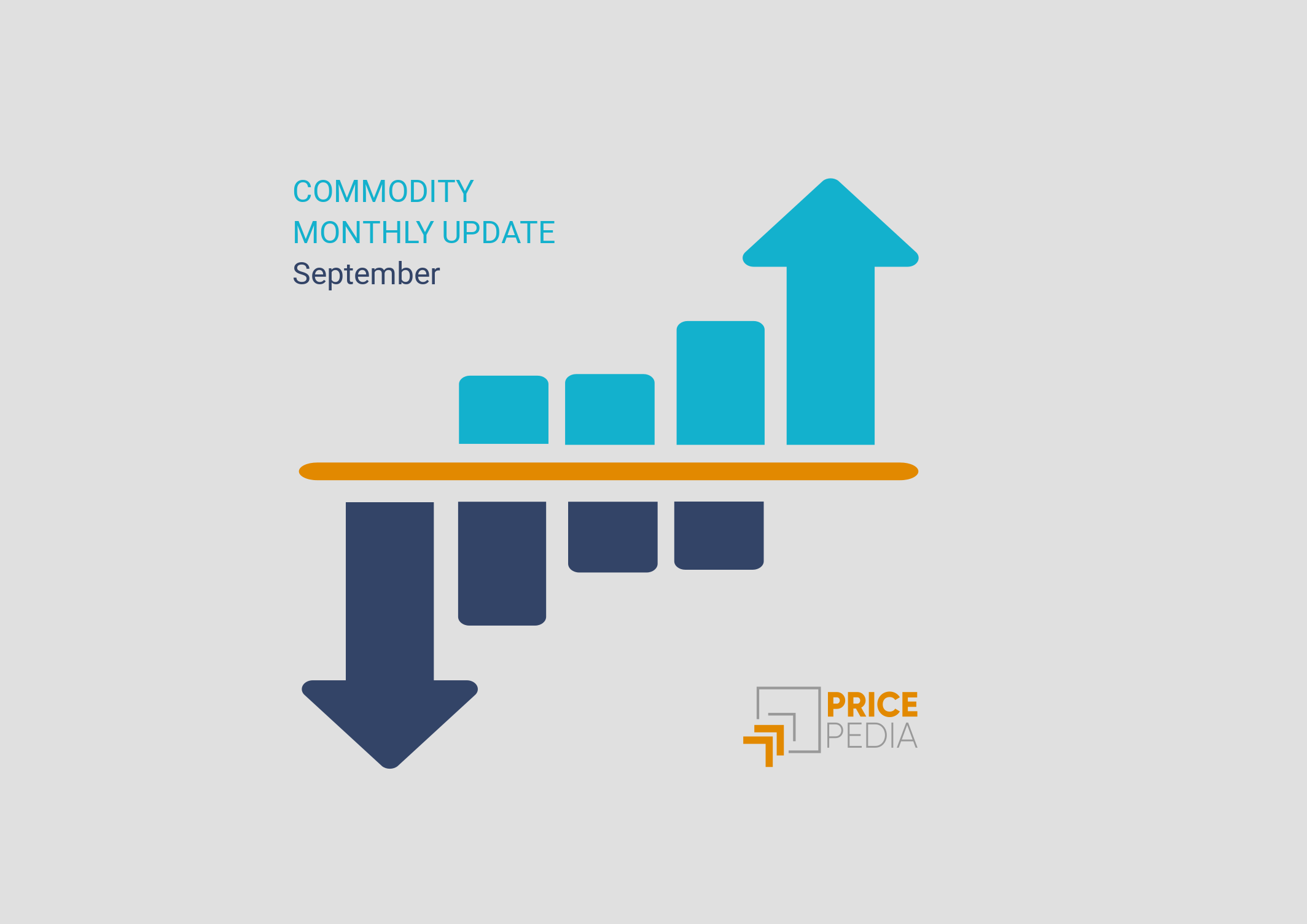The second part of 2023 ended with substantial stability in the prices of industrial commodities
Updates for December 2023
Published by Pasquale Marzano. .
EU Customs Global Economic TrendsThe PricePedia monthly commodity price update for December 2023 has been published. The dynamics of the prices of raw materials and basic goods is shown in the following graph, which illustrates the aggregate PricePedia indices of the Total Commodity[1] of the commodities Industrial[2] and Energy.

After the anomalous growth that affected prices in the two-year period 2021-2022, in 2023 there was a generalized reduction in prices in euros on the European market. The downward trend was more accentuated during the first part of the year. In the second part, however, we witnessed new increases in energy prices, linked above all to the policies of reducing oil supply by OPEC+ and the consequent effect along the entire relevant supply chain; the prices of "core" industrial commodities were instead affected by substantial stability, a sign that they have reached a floor below which it is difficult to fall (see the article "Fifth month of stability in the physical prices of industrial commodities").
This stability is the effect of phenomena that push prices in opposite directions: on the one hand the higher production costs compared to previous years tend to keep prices at levels higher than the long-term historical averages, on the other the weak phase the economic cycle of the global economic cycle tends to ease the pressure on the prices of goods on the physical markets.
Month-over-Month Trends
The stability of recent months is also well represented by the following graph, which shows the economic changes in euros in December 2023, compared to November 2023, for the main PricePedia product categories.
Chart 1: December 2023, % changes in euros compared to November 2023
Source: PricePedia
In December 2023, Energy recorded the most intense reduction among the product categories considered, equal to -6.9%, also thanks to higher temperatures compared to winter averages. However, attention on the prices of energy commodities remains high due to the conflict in the Middle East and its possible expansion to other regional players, although the effects on financial prices, particularly reactive to macroeconomic and geopolitical phenomena, were contained until moment, as reported in the weekly update Interest rate expectations affect commodity markets.
As regards the other product categories, cyclical variations were also recorded in December, that is, compared to the month of November 2023, rather limited and between -2% of Ferrous and +0.7% of Inorganic Chemicals.
Year-over-Year Trends
The following graph shows the Year-over-Year changes (December 2023 to December 2022) in euros of the aggregate price indices of the PricePedia product categories.
Chart 2: December 2023, % changes in euros compared to December 2022
Source: PricePedia
As can be seen from the graph, in December 2023 commodity prices in Europe presented much lower levels than in the previous twelve months. In trend terms, the intensity of the decline is different depending on the product family considered. The sharpest decline was recorded by Inorganic Chemicals and Energetics, only slightly less than -20%. With the exception of Precious, Non-Ferrous metals and Food goods, double-digit decreases were recorded for all other product categories.
1. The PricePedia Total Commodity index results from the aggregation of indices relating to industrial, food and energy commodities.
2. The PricePedia industrial price index results from the aggregation of the indices relating to the following product categories: Ferrous, Non-Ferrous, Wood and Paper, Chemicals: Specialties, Organic Chemicals, Inorganic Chemicals, Plastics and Elastomers and Textile Fibres.
Pasquale Marzano
Economist and data scientist. At PricePedia he deals with the analysis of commodity markets, forecasting models for raw material prices and management of reference databases.


